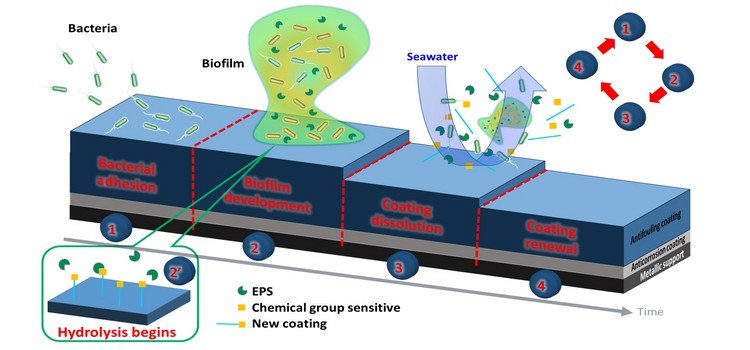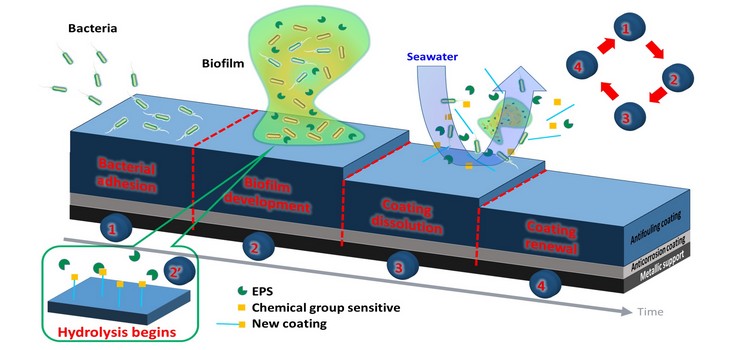Synthesis of an enzymatically biohydrolyzable tripartite beta-D-glucomonomer and RAFT polymerization to develop a marine antibiofilm self-polishing coating
Supervisor: BLACHE Yves
Co-supervisor: BRESSY Christine
Abstract
All seawater submerged surfaces are quickly colonized by a marine biofilm and subsequently, by vegetal and animal species.A few seconds after immersion, macromolecules (proteins, etc.) adhere to the surface to form the conditioning film. Within hours, bacteria settle and after days, larvae and algae colonize the conditioned surface. This undesirable effect of colonization creates a lot of problems, especially in the marine industry. The biofouling increases the frictional resistance on the ship hulls due to an increase of the roughness, resulting in an increase of fuel consumption . Many solutions have been developed to inhibit the settlement of animal and vegetal organisms. Fouling Release Coatings (FRCs) are known to decrease the adhesion strength of some marine macroorganisms on surfaces due to their low surface energy and low elastic modulus1 but are efficient only at high speed (> 5 knots). On the other hand, Self-Polishing Copolymer (SPC) coatings are efficient under static condition. The antifouling efficacy of SPC coatings relies on both the release of synthetic biocides into the marine environment and the controlled erosion of the surface . As the biocidal legislation is more and more restrictive, it’s necessary to develop new alternatives of coatings. In our laboratory, Andjouh et al. have recently developed bio-inspired polymers based on bromotyramine derivatives. In addition, Nguema et al. have developed new electroactive polymers expected to reduce the biofilm colonization. In association with DCNS, we currently develop a new self-polishing coating sensitive to molecules secreted by marine bacterial biofilms, the erosion being therefore initiated by specific extracellular polymeric substance. This new coating should be efficient under static conditions, no released of biocides and a long life efficiency (as SPC and FRCs), so it’s very interesting for the naval industry and unmoving structures (hydroelectric plant, oil platform, etc.).



